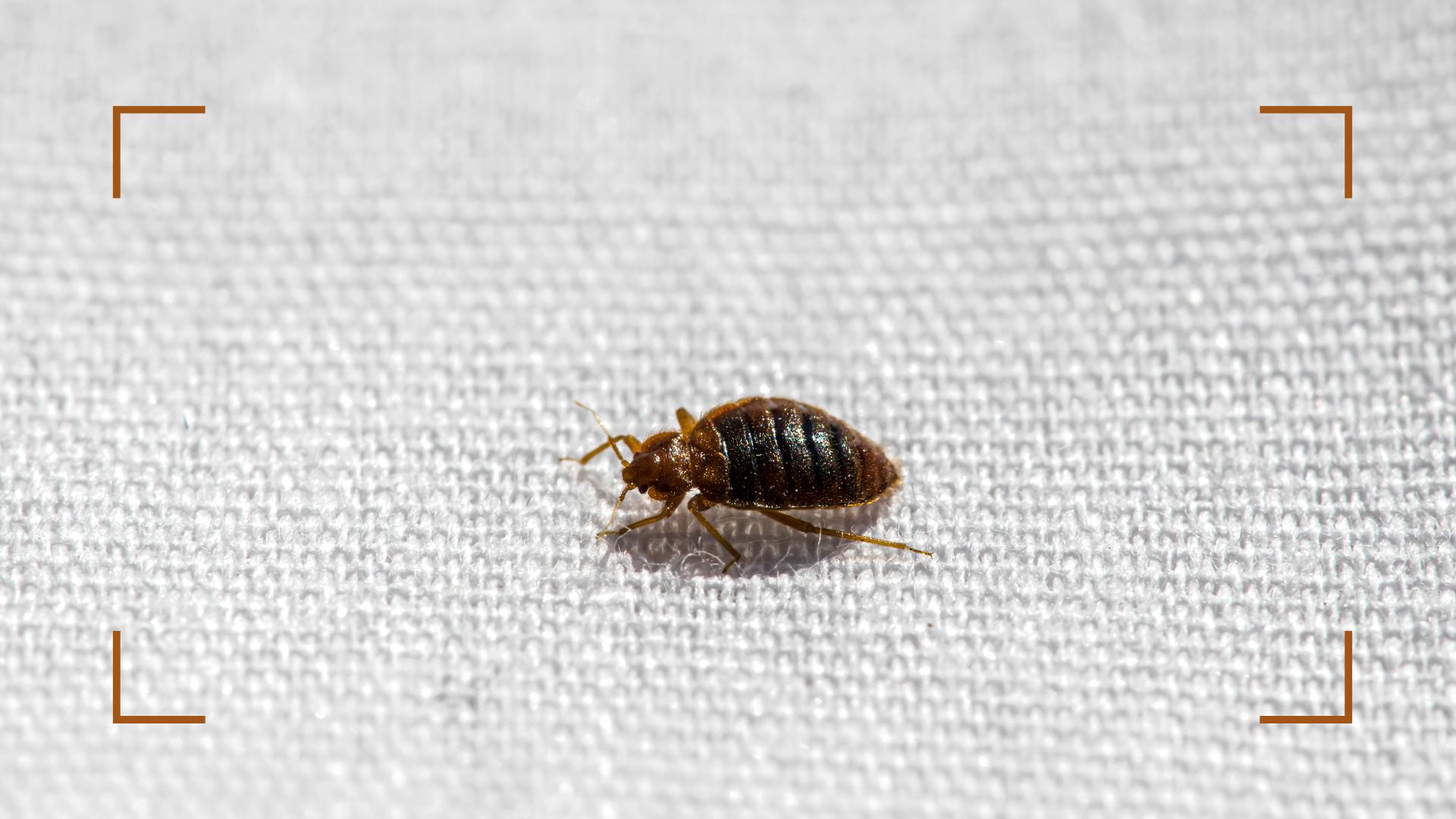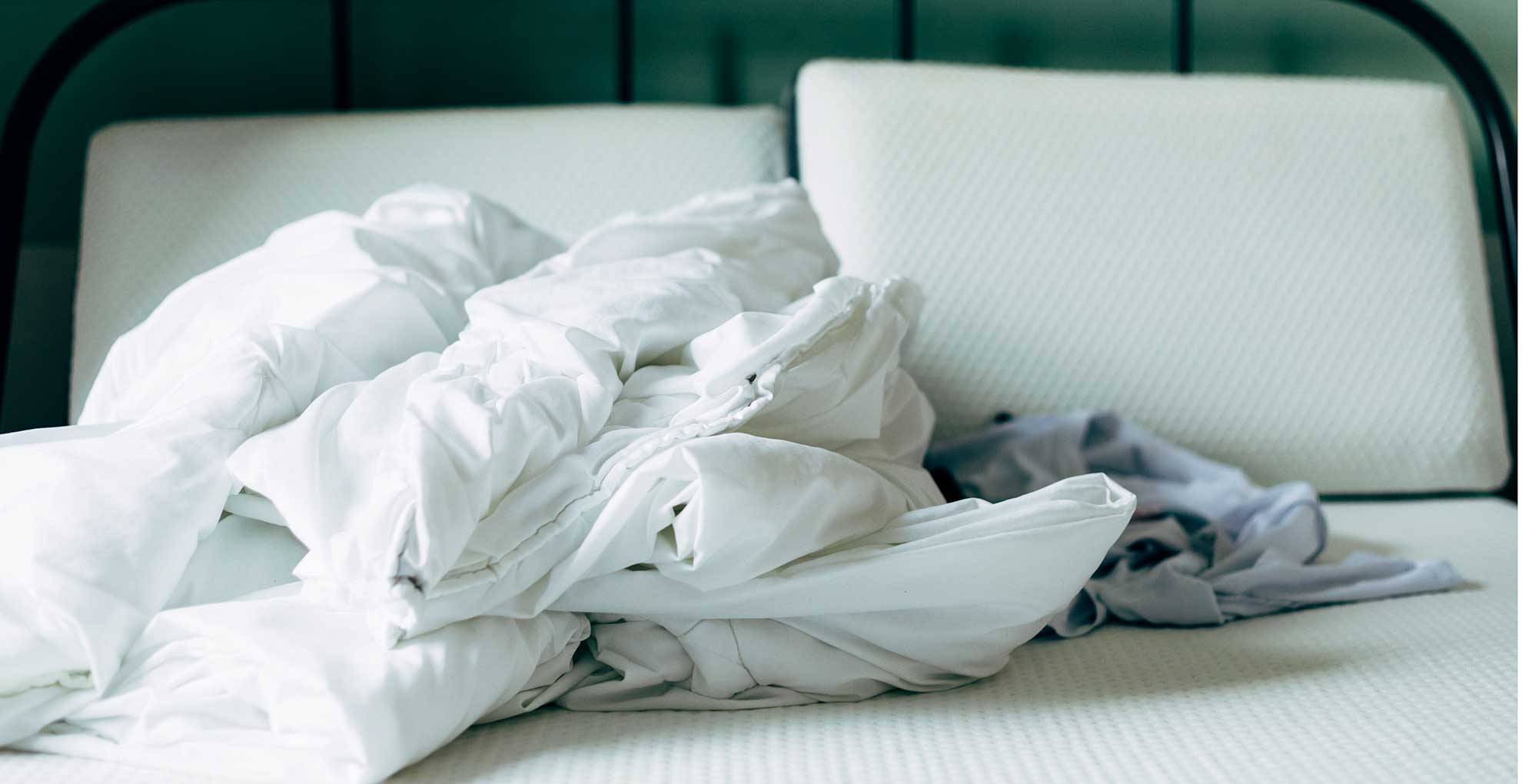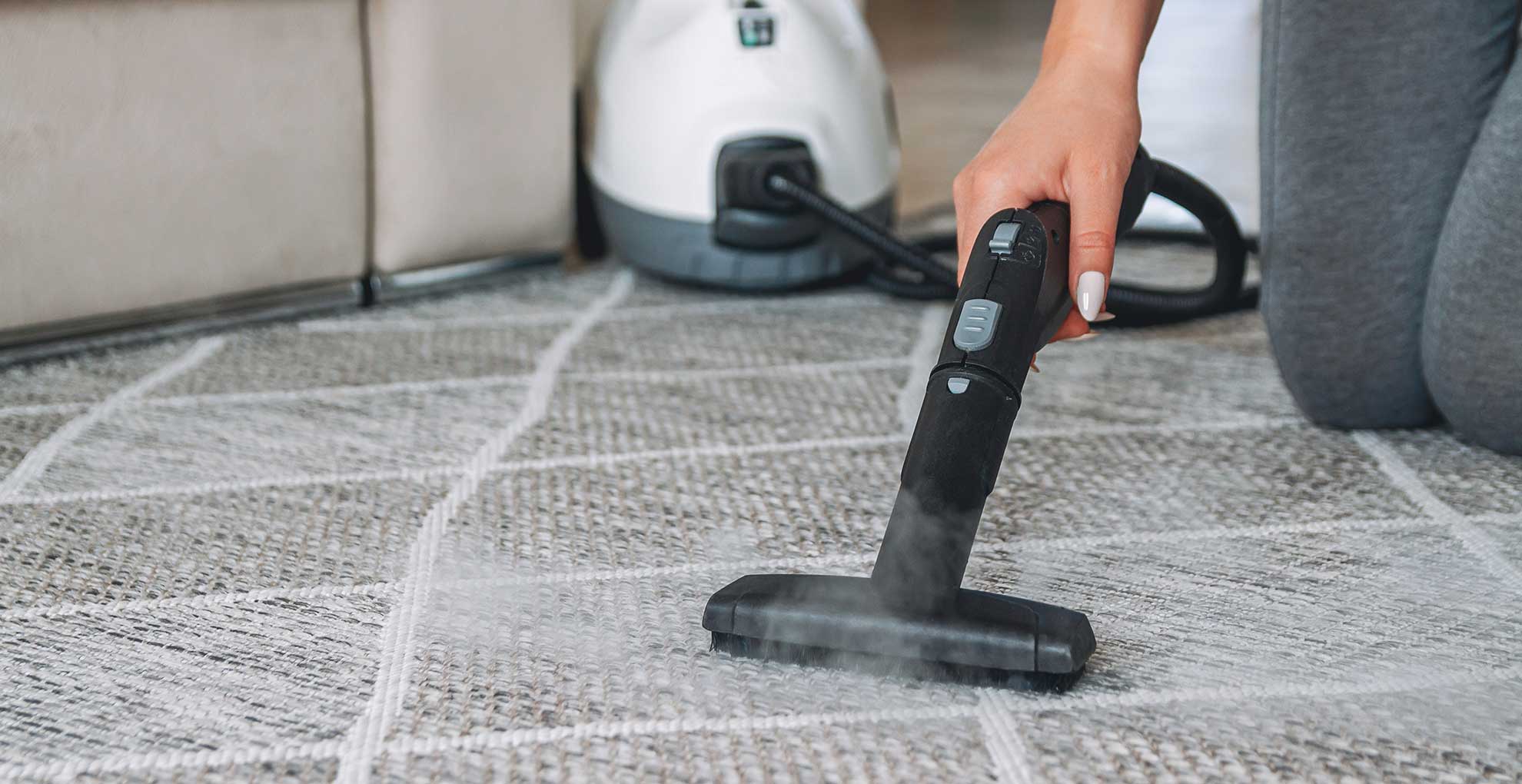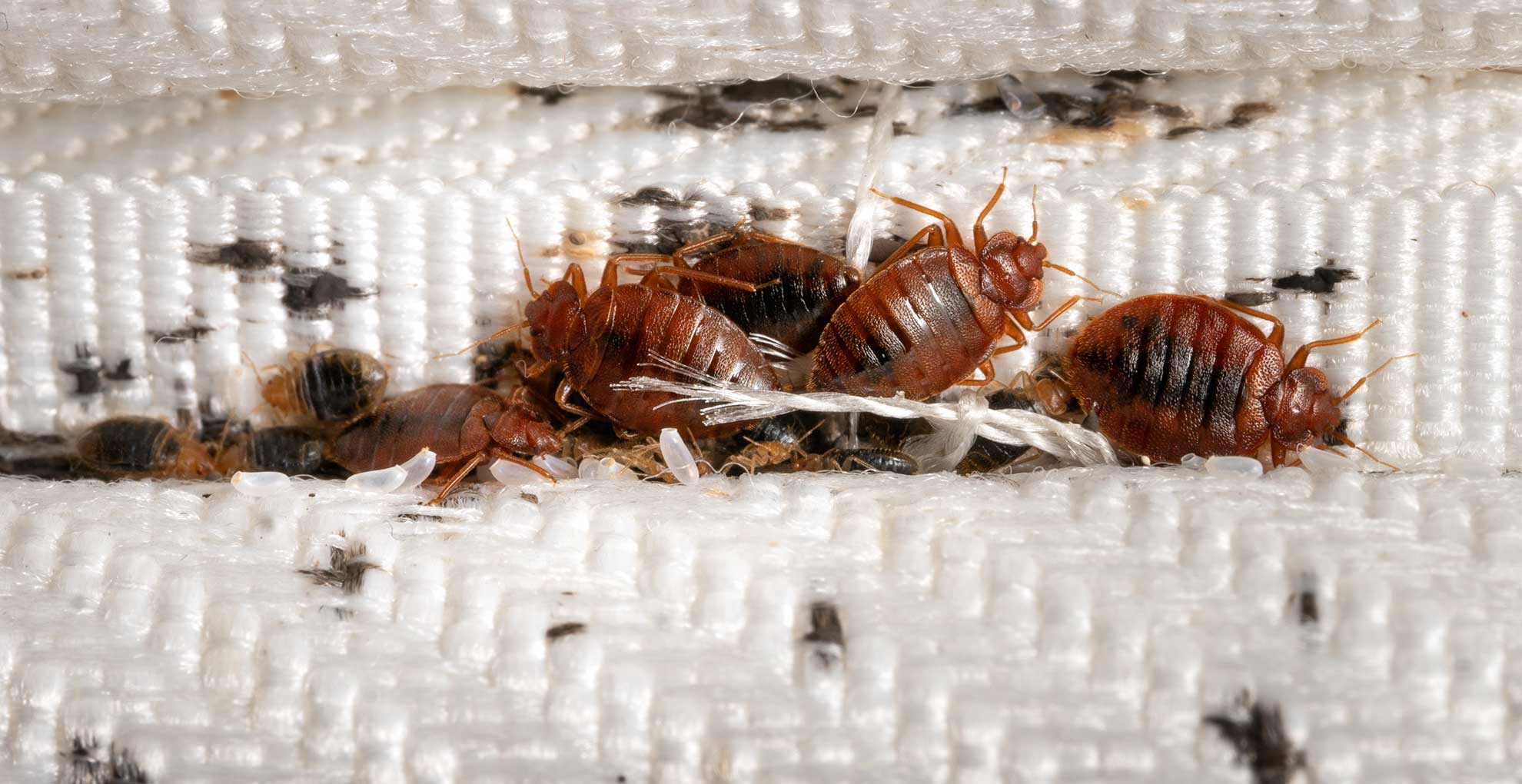Experts reveal how to get rid of bed bugs – and how to spot signs of an infestation
Follow our expert advice from pest control specialists to prevent and rid your home of unwanted bed bugs


With Paris currently in the grips of a bed bug infestation, many worry it could soon be a problem here in the UK. We spoke to pest control experts to find out how to get rid of bed bugs fast and how to spot the signs to avoid these unwanted pests taking over our homes.
The phrase 'sleep tight, don't let the bed bugs bite' feels all the more real since the infestation in Paris. Sadly all anyone could talk about during Paris Fashion Week was bed bugs, as the capital fell under siege from the unwanted creepy crawlies.
Given their unwanted presence being felt not too far from our shores and the fact they can travel, many are seeking comfort from knowing what to look out for and how to get rid of bed bugs should they appear in the home. Luckily similar to getting rid of fleas or irradiating a flying ant problem, there are effective ways to tackle the problem.
Here is what our team of pest control experts had to say...
How to check for signs of bed bugs
"Bed bugs are incredibly resilient, and you get them by unwittingly bringing them into the home," says NOPE! Pest Expert, Dr. Jonathan Kirby. "However, unlike other pests like ants, it’s highly unlikely that they’d venture in through open windows or doors, so don’t worry about this element."
"Instead, they’re likely to enter by being carried on objects like bedding, furniture, clothing and luggage that you bring into your home."
Here are the signs to look out for to know if you have bed bugs in your home...
Sign up to our free daily email for the latest royal and entertainment news, interesting opinion, expert advice on styling and beauty trends, and no-nonsense guides to the health and wellness questions you want answered.
- Dark corners where they can hide: "Bed bugs love to hide in small, dark areas," explains Dr. Jonathan Kirby. "That’s why it’s so important to regularly clean items in the home, as well as regularly check here for signs of bed bugs. (Similar to getting rid of spiders) Bed bugs are nocturnal, so try looking at night if you want to catch them crawling across your mattress."
- Look out for noticeable marks on the body: "Such as flat, red spots in lines or clusters; blisters that may itch; red rashes and small areas of pronounced bleeding on the skin," Bed bugs go for exposed skin, so cover up to lower the risk if you suspect an infestation.
- On the bed itself, watch out for clusters of dark, dotted stains on sheets, mattresses, bed frames and nearby areas. "Musty and mouldy smells, bug shell casings and of course, live/dead bed bugs, are all indications you may have a problem too."
How to get rid of bed bugs, according to pest control experts
Bed bugs are the thing of nightmares, quite literally. "Bed bugs are extremely resilient and difficult to eradicate," warns Georgios Likopoulos, a leading pest technician at Fantastic Services. "However, it’s not an impossible task. Once you’ve correctly identified that bed bugs are in your home."
"As a professional, I do not recommend DIY methods, such as essential oils, rubbing alcohol, etc., since the infestation can worsen. I have actually dealt with a severe bed bug infestation that eventually required throwing their best mattress away."
Our team of pest control experts all agree that the best way to approach a bed bug infestation is to start with a thorough decluttering and cleaning of any infested areas, similar to getting rid of fruit flies:
1. Declutter and deep clean
It's important to remove any potential hiding places, to leave them exposed. Decluttering your house, taking extra care to declutter in bedrooms around beds, and carrying out more frequent deep cleaning will give bed bugs nowhere to hide.
"Contrary to their name, bed bugs exhibit an excellent hiding ability, concealing themselves in various nooks and crannies within bedrooms, including cupboards and carpets," explains Paul Blackhurst, head of the technical academy at Rentokil Pest Control. "Moreover, they can seek refuge in upholstery such as sofas, curtains, and chairs."
"Remove all covers and bedding, empty all wardrobes and remove any carpets from under the infested furniture will be helpful as well," adds Georgios. "The main goal here will be to restrict the bed bugs from going to other parts of your property."
2. Wash at high temperatures
Bed bugs can not tolerate high temperatures, so washing at the maximum heat is key to getting rid of any infestations. Strip beds to wash mattress protectors and bedding, remove any loose covers on furniture to wash immediately and clean rugs thoroughly using heat.
Georgios recommends the first step is to: "Shake all bedding and clothes outside of the home to remove eggs, moulted casings and dead bed bugs."
Next, "Wash infested bedding at a high temperature of at least 60℃ for ideally 90 minutes minimum," advises Paul. "If possible, place items into a tumble dryer for a minimum 30-minute cycle." Continue to wash your sheets often enough to keep on top of the cleanliness.

Georgios has been with Fantastic Services for over 3 years as a pest control franchisee, skilled in a variety of insects and pests. Georgios is also one of the teams most comprehensive pest professionals when it comes to addressing rodent issues. His goal is to stay up-to-date on the latest pest control methods and pest behaviours.
3. Vacuum affected areas
A quick and efficient way to remove bed bugs from any area of your home is to vacuum them. "Vacuum your bed, mattress, and any area near to where you have spotted bed bugs," says Paul. "Use the hose attachments to clean along walls and around edges."
"Don’t forget to reach skirting boards or anywhere bed bugs could be hiding such as luggage," adds Dr. Jonathan Kirby. "Start at the furthest edge of known bed bug activity and work inwards - this also helps minimise the accidental spread of bed bugs elsewhere in the home."
Paul advises: "Afterwards, take the vacuum outside of your property to empty into an outside bin and seal securely."
Ensure you are using one of the best vacuum cleaners to offer the strongest suction possible to leave no bug standing.
4. Carry out a steam clean
Harness the power of steam to clean with efficiency. "I recommend running a steam cleaner on the highest possible setting along with all furniture items," says Georgios. "Paying special attention to the joints and all nooks and crannies."

5. Keep on top of cleaning
The best method to avoid bed bug infestations is prevention, just as it is with keeping flies out of the house. "Make sure to regularly vacuum and clean mattresses and bedding, paying particular attention to seams and corners," says Georgios.
"Repair cracks in walls, skirting boards and any small defect a bed bug could infest. Additionally, before bringing items into your home like second-hand furniture and holiday clothing check for signs of bed bugs
FAQ
What are bed bugs?
Bed bugs are not microscopic critters, they are in fact bugs that are easily visible and therefore all the more unpleasant to have in your home – a bit like when you can't wait to get rid of daddy long-legs.
"Bed bugs are blood-feeding parasites that bite humans and animals to feed," explains Dr Sophie Momen, a consultant dermatologist at the Cadogan Clinic.
"Bed bugs prefer warm environments and often feed at night. They often live in bed frames, mattresses and pieces of nearby furniture. They can live for months without feeding (estimated up to one year)."

What is the main cause of bed bugs?
It's a misconception that how often you clean your house is the cause of bed bugs."There is no connection between cleanliness and bed bug infestations," says Georgios. "Human activity is the primary cause of bed bug infestations."
"Their skill at hitchhiking allows them to easily move from one place to another via luggage, clothing, furniture, and other personal belongings."
"When travelling, bed bugs can be picked up in hotels, motels, and vacation rentals infested with bedbugs." On public transport seating, including buses and trains, is a prime spot for bed bugs to hide and be able to reach a wide audience to spread further.
Another cause of bed bugs spreading is buying second hand furniture without due care and diligence. "The purchase of used furniture, especially mattresses and upholstered items, can introduce bed bugs into a home if the furniture is infested."
Don't fall prey to this common mistake when buying second hand furniture, check it over thoroughly before purchasing.
How do you get rid of bed bugs fast?
"Do not immediately jump to grab the pesticide spray bottle," warns Georgios. "Bed bugs are notorious for their resistance to treatment. Commercial products will only push them into hiding, where they will continue to grow in number, and the infestation will only become worse."
"If you decide, however, to use a chemical spray, be careful when treating your bed with insecticides since they can be harmful if not used properly. Mattresses and bed linens should not be treated with chemicals unless the label says so." The same can be said when trying to get rid of mosquitoes because many of the chemicals can be toxic.
"High levels of hygiene, deep cleaning and the use of DIY measures will help to kill some bed bugs," adds Paul. However, if you are unfortunate enough to have a bed bug infestation then you'll need professional pest controllers who can offer a range of services, such as heat treatment to treat them fast and effectively."
What kills bed bugs naturally?
If you're looking to kill bed bugs naturally you will need to use heat. "Bed bugs are sensitive to high temperatures," explains Georgios. "You can use heat to kill them by washing infested clothing, bedding, and curtains in hot water (at least 50°C) for at least 30 minutes, and then drying them on the hottest setting for at least 30 minutes afterwards. A steam cleaner can also be used to treat areas that have become infested."
Diatomaceous earth is another natural method our expert recommends. "Sprinkle the non-toxic powder in cracks and crevices where bed bugs hide. It absorbs the waxy coating on the bed bugs' exoskeleton, causing them to dehydrate and die."
While all of these solutions and natural methods can help reduce bed bug populations they have limits, as Georgios warns: "they are not always sufficient to completely eliminate an infestation." You may need to seek professional help if the problem persists.

Tamara is a highly experienced homes and interiors journalist with a career spanning over 22 years. Now the Lifestyle Editor of womanandhome.com, she previously spent 18 years working with the style teams at Country Homes & Interiors and Ideal Home. With these award-winning interior teams, she gained a wealth of knowledge and honed her skills and passion for styling and writing about every aspect of lifestyle and interiors.
A true homes and interiors expert, Tamara has been an ambassador for leading interior brands on multiple occasions, including appearing on Matalan’s The Show and presenting at top interior trend forecasting events such as the Autumn Fair and Spring Fair.